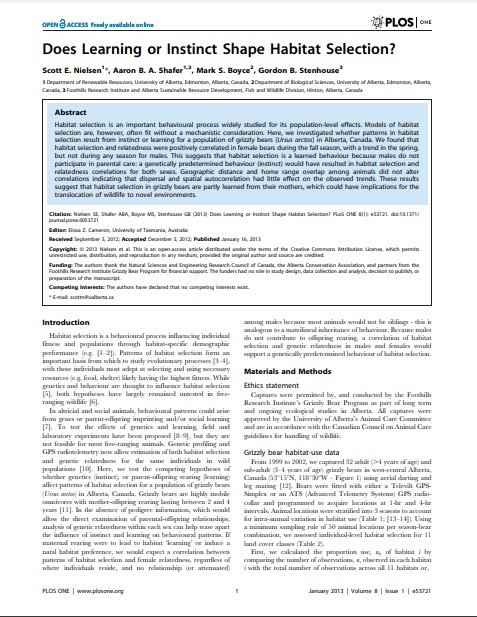Does Learning or Instinct Shape Habitat Selection?
Bosque Modelo:
Foothills
Temática:
Gestión forestal
Tipo de documento:
Artículo científico
Resumen
Habitat selection is an important behavioural process widely studied for its population-level effects. Models of habitat selection are, however, often fit without a mechanistic consideration. Here, we investigated whether patterns in habitat selection result from instinct or learning for a population of grizzly bears (Ursus arctos) in Alberta, Canada. We found that habitat selection and relatedness were positively correlated in female bears during the fall season, with a trend in the spring, but not during any season for males. This suggests that habitat selection is a learned behaviour because males do not
participate in parental care: a genetically predetermined behaviour (instinct) would have resulted in habitat selection and relatedness correlations for both sexes. Geographic distance and home range overlap among animals did not alter correlations indicating that dispersal and spatial autocorrelation had little effect on the observed trends. These results suggest that habitat selection in grizzly bears are partly learned from their mothers, which could have implications for the translocation of wildlife to novel environments.
Información Bibliográfica
Autor:
Nielsen, S.E., Shafer, A.B.A., Boyce, M.S., & Stenhouse, G.B.
Revista:
PLoS ONE
Año:
2013
N°:
1
País :
Canadá
Páginas:
-
Volumen:
8
Idioma:
Ingles
Palabras claves
Grizzly Bear, Ursus arctos, home range, movement, habitat





